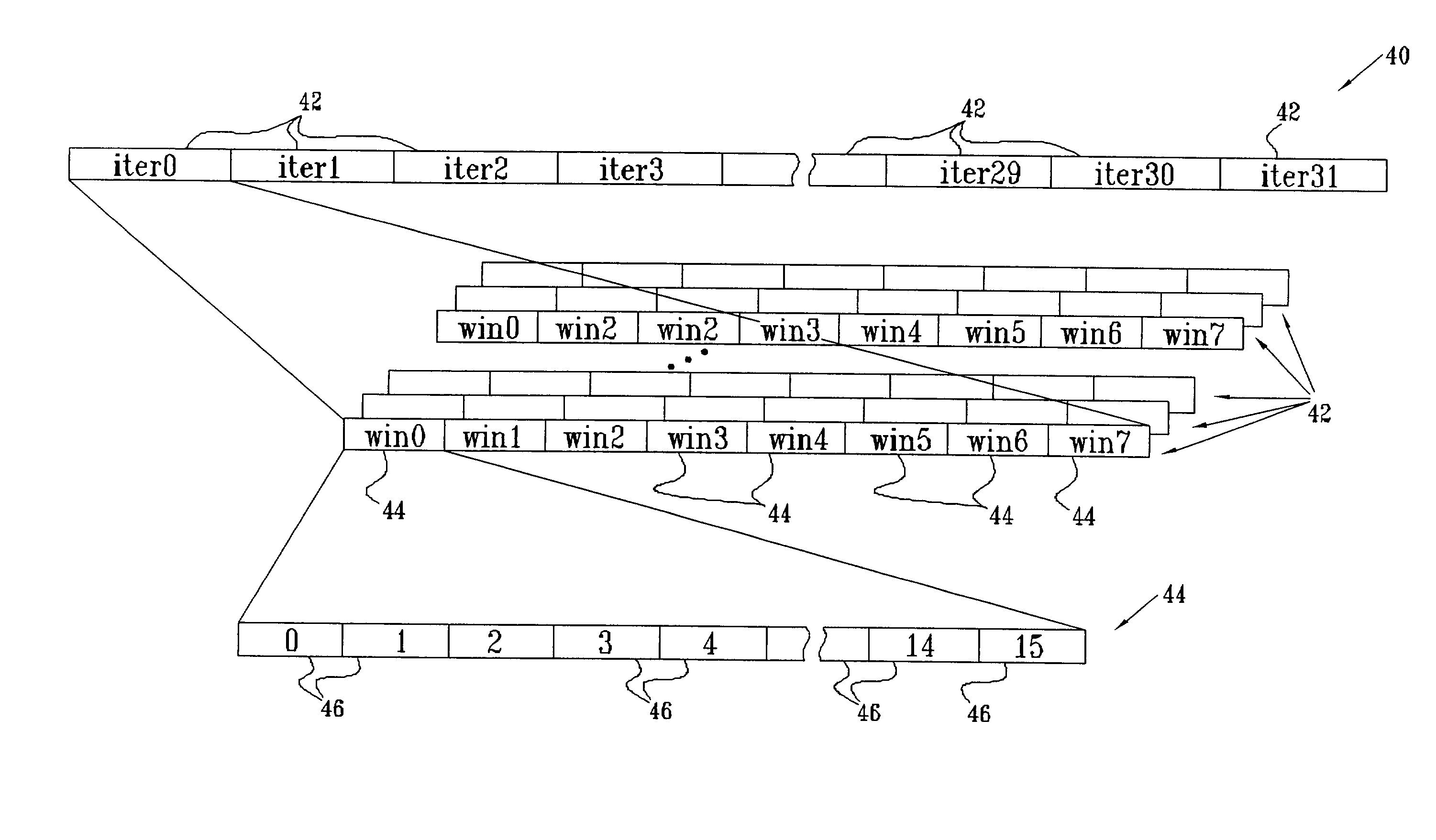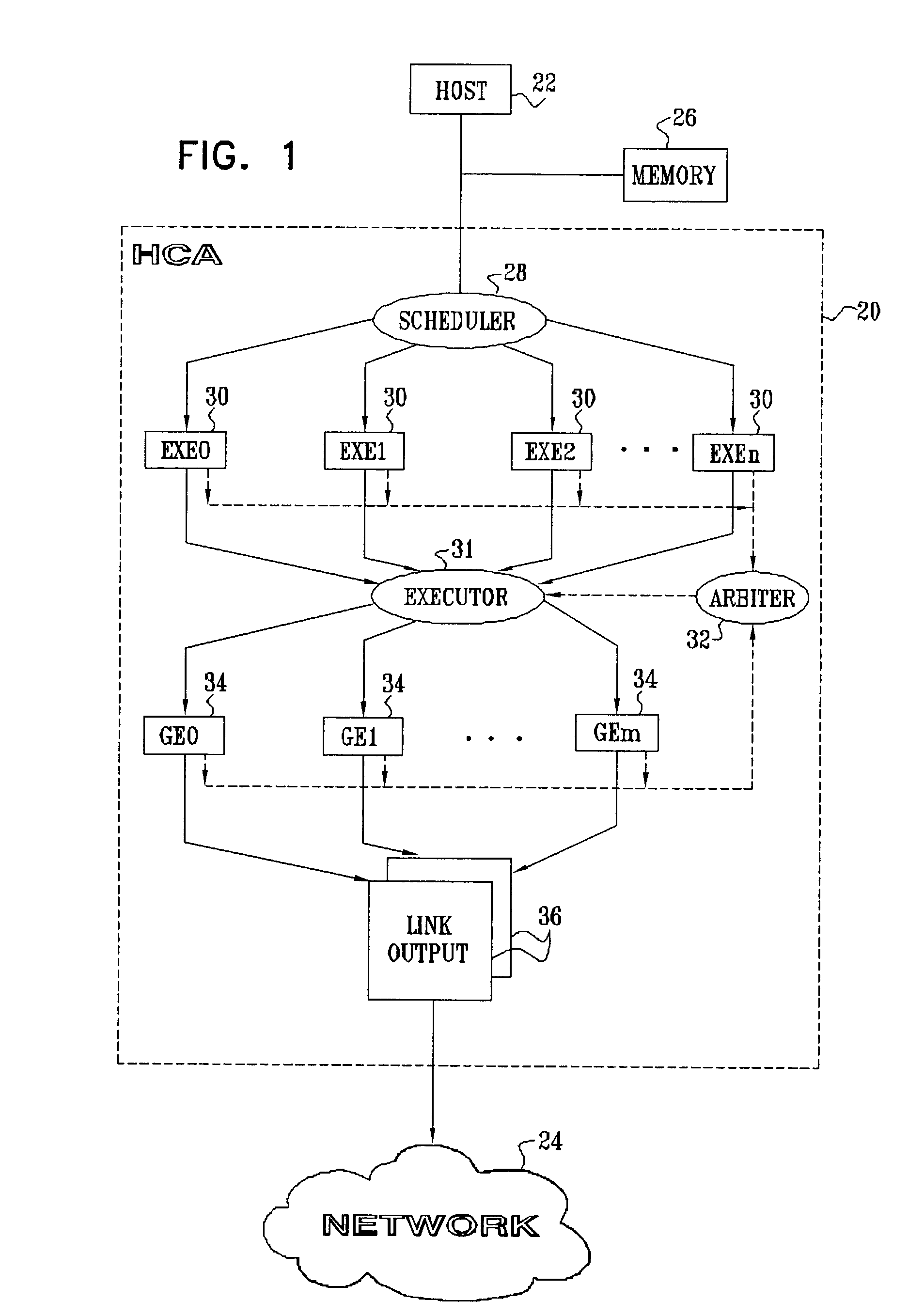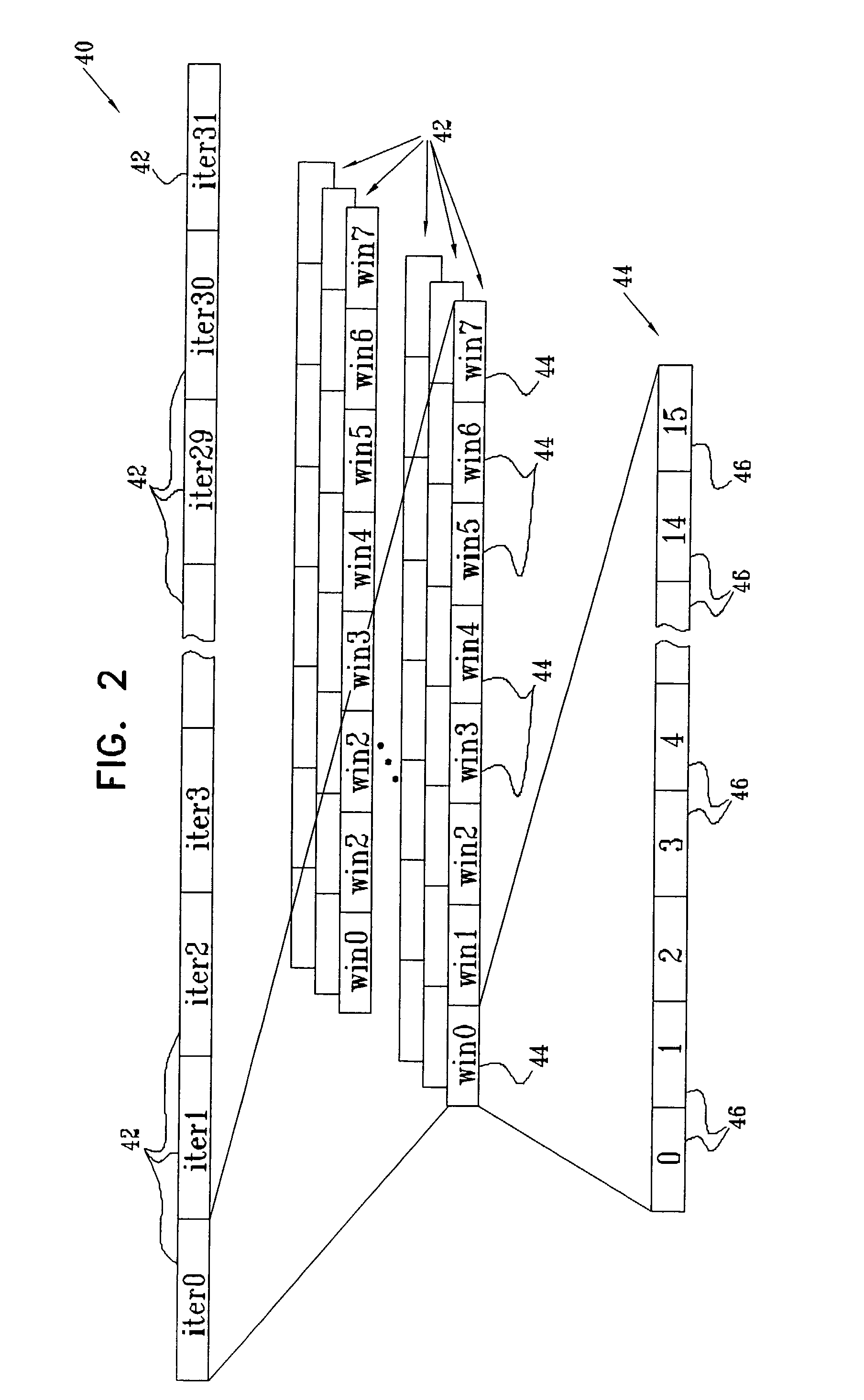Round-robin arbiter with low jitter
- Summary
- Abstract
- Description
- Claims
- Application Information
AI Technical Summary
Benefits of technology
Problems solved by technology
Method used
Image
Examples
Embodiment Construction
[0039]FIG. 1 is a block diagram that schematically illustrates a network adapter 20, which is used to couple a host processor 22 to a network 24, in accordance with a preferred embodiment of the present invention. In this exemplary embodiment, adapter 20 is a host channel adapter (HCA), and network 24 is an InfiniBand™ (IB) switch fabric. It will be understood, however, that the features of adapter 20 described hereinbelow may equally be applied to adapters and networks of other types. Furthermore, the principles of round-robin arbitration embodied in adapter 20 may similarly be used in other communication and data processing applications and are in no way limited to the particular application described here.
[0040]The IB architecture is described in detail in the InfiniBand Architecture Specification, Release 1.0 (October, 2000), which is incorporated herein by reference. This document is available from the InfiniBand Trade Association at www.infinibandta.org. Briefly speaking, clie...
PUM
 Login to View More
Login to View More Abstract
Description
Claims
Application Information
 Login to View More
Login to View More - R&D
- Intellectual Property
- Life Sciences
- Materials
- Tech Scout
- Unparalleled Data Quality
- Higher Quality Content
- 60% Fewer Hallucinations
Browse by: Latest US Patents, China's latest patents, Technical Efficacy Thesaurus, Application Domain, Technology Topic, Popular Technical Reports.
© 2025 PatSnap. All rights reserved.Legal|Privacy policy|Modern Slavery Act Transparency Statement|Sitemap|About US| Contact US: help@patsnap.com



